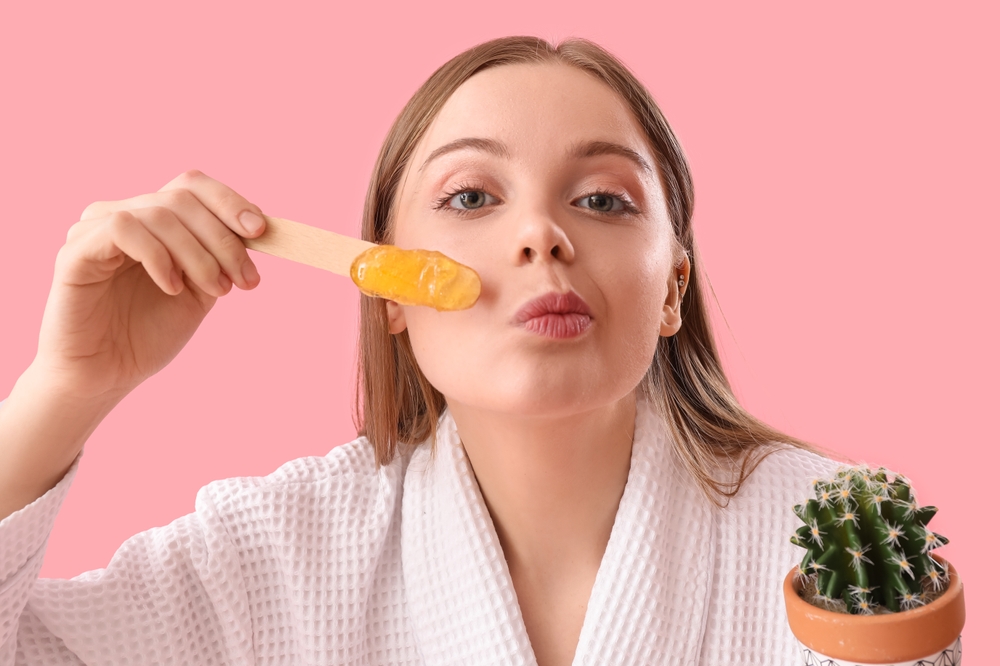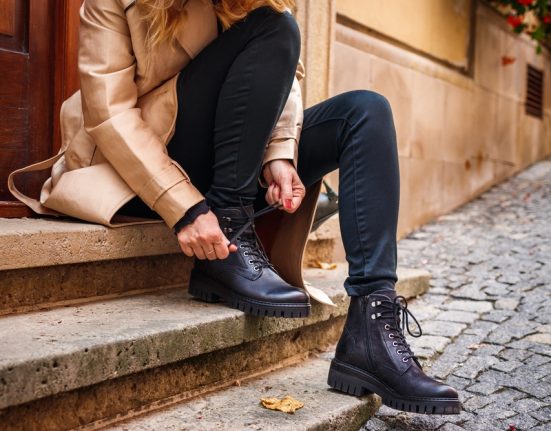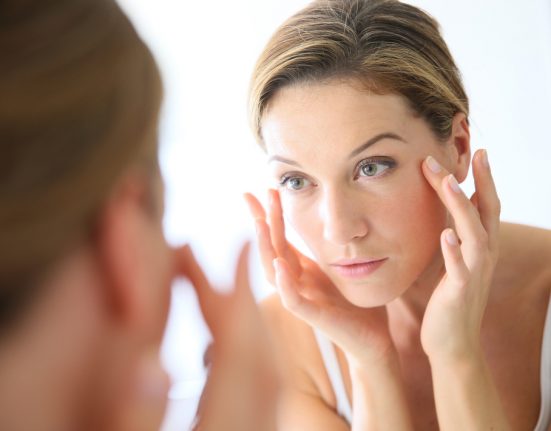For starters, hair will not grow back thicker.
With all the different kinds of hair removal on the menu — from shaving to threading to dermaplaning to plucking — it can get confusing to navigate what’s right for you. Here’s what you need to know about waxing facial hair, whether you’re trying it out at home or headed to the salon:
1. Is it OK to wax facial hair?
Yes! It’s a popular form of hair removal for men and women because it’s long-lasting and removes hair from the root. However, if you’re on certain medications or have a skincare regimen, proceed with caution. “Topical treatments like Retin-A and Differin thin the skin, making it much more sensitive and prone to tears and peeling,” warns Marta Grochowska of New York City’s Haven Spa.
But these aren’t the only meds you should be mindful of before getting a wax. Oral medications can put you at risk, too: “Accutane and many antibiotics will make your skin hypersensitive,” so don’t wax if you’re using retinoids or prescription acne medication. Instead, “I recommend they opt for other forms of hair removal like threading, which just grabs the hair instead of the skin and the hair,” says Dr. Joyce Imahiyerobo-Ip, board-certified dermatologist
2. Will waxing hurt my skin?
Yanking hair out by the root doesn’t feel great, but when done properly by a professional, it likely won’t leave lasting damage behind. There are a few exceptions, though: “If you have an autoimmune disease like lupus, your skin is way more sensitive to getting burned or irritated,” warns Dr. Imahiyerobo-Ip.
“If you’re very prone to breakouts, you should consider other options like electrolysis or laser,” advises Grochowska. More serious medical conditions can also play a part in whether waxing negatively affects you. If you’re not sure whether your skin could be at risk, especially if you plan on doing a wax at home without an esthetician’s expertise, consult with a dermatologist first.
3. Will waxed hair grow back thicker?
Nope! “The hair generally grows back the same — though everyone seems to have their own theory or old wives’ tale about it,” says Grochowska, who adds that generally, most people find that long-term waxing will result in less regrowth. That said, the hair “will seem thicker if it’s broken [a.k.a. cut from shaving] than if it’s removed at the root” because it won’t have a tapered end.
4. Can I wax my face at home?
If you take precautions and follow all the directions properly, like doing a patch test to check for an allergy, waxing at home can be safe. Be very careful of heating the wax, though. “A common mistake I see in at-home waxing procedures is not having a good gauge on the temperature of wax,” says Dr. Imahiyerobo-Ip. While burns can happen anywhere, even at a reputable spa, she warns that they’re more likely when waxing at home.
5. How long does a facial wax last?
Depending on how fast your hair grows, a wax can last you a couple weeks or a couple months. The annoying thing about shaving is that if you’re particularly hairy, stubble will probably start cropping up within a day or two, which isn’t so much of a problem with waxing. “The great thing about waxing is that it’s semi-permanent — it lasts two to eight weeks,” says Dr. Imahiyerobo-Ip
6. What’s the difference between waxing and sugaring?
“Waxing is when you use a warm resin base that is applied to an area and then removed either with a strip or let dry and removed on its own, taking hairs out by the root,” explains esthetician Grochowska. On the other hand, “Sugaring is a warm sugar and lemon mix that’s applied to the skin and rolled across, thereby removing the hairs,” she adds.
7. What are the side effects to waxing your face?
When you tear out hair and pull at your skin with wax, there’s a chance you will wind up with a some irritation. “Some people are red for a few minutes, some are red for 12 hours,” says Grochowska. “If you’ve never been waxed before or you’re trying a new place or type of wax, it’s best to err on the side of caution and give yourself plenty of time to recuperate.”
Most of the time, you just have to wait it out, but there are ways to help speed up the process. “Most people respond well to aloe gel,” says Grochowska. Dr. Imahiyerobo-Ip also advises using a little over-the-counter hydrocortisone to soothe the skin. Just to be safe, if you’ve got a big event to go to and want to prep your brows or lip, schedule your wax a few days beforehand to ensure any redness goes down.
8. How can I tell if I’m having a bad reaction to wax?
A little redness and irritation is normal, but there are some signs that you may be having more than the average reaction. If you’re noticing little pimples or pus-filled bumps around the waxed area, you could be experiencing folliculitis, which is an inflammation of the hair follicles, explains Dr. Imahiyerobo-Ip. While folliculitis can occur simply from the trauma of waxing, it can also be caused by exposure to bacteria in the wax and result in an infection. If this is the case, Dr. Imahiyerobo-Ip advises heading straight to the dermatologist.
Another big red flag: Significant redness, swelling, and pain, which could indicate an allergy to the wax. “Wax contains a lot of additives like colors, fragrances, and essential oils that people may be allergic to, which we call contact dermatitis,” explains Dr. Imahiyerobo-Ip. “That won’t go away on its own — you may need topical medications or even oral meds,” so see a doctor as quickly as you can.
9. Can I turn my face wax appointment into a spa day?
No. Waxing on a day you’re doing lots of other treatments, is another bad habit to avoid. “People do their waxing in the context of a ‘spa day,’ so they do it along with peels, face scrubs, and face masks, which make you more susceptible to negative reactions from the wax,” says Dr. Imahiyerobo-Ip.
10. Can I use the same waxing stick twice?
No. Double dipping (a.k.a when the stick is dipped into wax for multiple applications) is a big no-no. Why? Bacteria and pathogens can get introduced into the pot, which is a huge health risk — especially if you’re at a salon.








